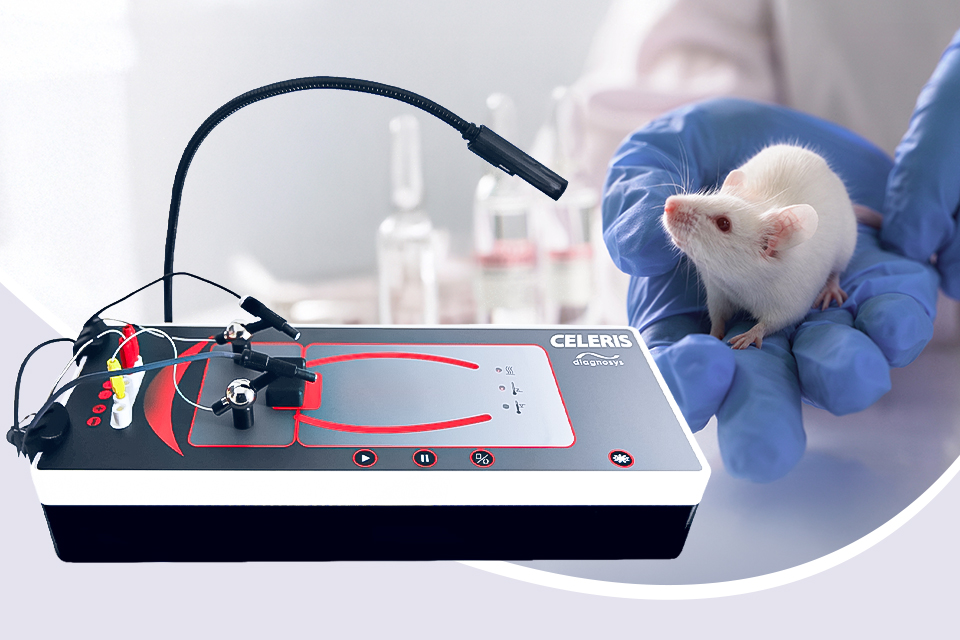Preclinical visual electrophysiology is a staple of ophthalmology research and is expanding within neurophysiological research. Experienced researchers and those new to the field may be interested in what modern test equipment can offer and which might provide the best return on their investment. Historically, visual electrophysiology equipment intended for human subjects has been repurposed for testing rodents. Nowadays, researchers seeking new preclinical visual electrophysiology equipment will find several highly desirable features, including dual-monocular full-field and pattern stimulators, dichoptic tests, quick non-invasive setups, integrated stimulus-electrode units, and low-noise body warmers.
1. Full-field flash and pattern stimuli
Recent publications show that a small fraction of pre-clinical visual electrophysiology tests performed today on rodents still rely on older equipment adapted from human designs. These situations present particular challenges when testing rodents. For example, mice have laterally positioned eyes with a field of view of approximately 280°, which is much wider than that of humans. As a result, when mice are placed in or under a binocular Ganzfeld stimulator meant for humans, part of their visual field likely remains unstimulated. In contrast, modern electrophysiology systems designed specifically for rodents ensure a calibrated and consistent full-field of illumination. These stimulators come in pairs, enabling researchers to align each stimulator to its respective eye independently. These dual-monocular stimulators are available for both flash and pattern stimulation.
2. Dichoptic testing
An additional benefit of the dual-monocular stimulators is that they are controlled independently. They enable protocols that stimulate each eye individually, using the fellow, unstimulated eye as a reference. This approach has been demonstrated to reduce noise in full-field ERG measurements. It is especially useful for visually evoked potentials (VEP) tests, which are performed one eye at a time. Switching eye patches on rodents in the dark is challenging and risks disrupting the animal’s position, adding variability in the measurements. It’s also prohibitively time-consuming when testing large cohorts. In contrast, purpose-designed stimulators can be aligned to each eye at the beginning of each test, and total test time can be reduced by half simply by interleaving the tests for both eyes. For example, when the interstimulus interval is 10 seconds, the system can be programmed to stimulate the right eye, wait 5 seconds, then stimulate the left eye, wait 5 seconds, and return to the right eye. In this manner, both eyes are tested with the appropriate interstimulus interval in almost the same amount of time it would take to test one eye.
3. Speeding up tests with quick, non-invasive setups
State-of-the-art rodent stimulator designs are integrated with the electrodes. These integrated assemblies enable test operators to align the stimulator and position the electrode in just one step. They require minimal training, improve placement consistency, and save considerable time. They are less invasive than setups that require the placement of an additional reference needle or ground electrode, which also adds variability.
4. Minimizing measurement variability with ring electrodes
The strongest electrical signal comes from the center of the cornea. However, placing corneal electrodes there will occlude the pupil and interfere with light stimuli entering the eye. Dual-monocular stimulus assemblies incorporate electrodes with a ring geometry that matches the size of the rodent’s eye. This design greatly minimizes electrode placement as a source of measurement variability.
5. Keeping the animal warm and the equipment quiet
Under anesthesia, rodents lose their ability to regulate their body temperature, and there is an inverse relationship between body temperature and ERG amplitude. They must be kept warm to avoid hypothermia and maximize recording accuracy. Heating pads that use AC-powered heaters or circulating heated water beds can add significant electrical noise to the signal response. The best equipment designs include DC-powered heaters to mitigate this issue.
Proven workhorses in pre-clinical research
Pre-clinical testing is an essential step in validating promising new therapies and interventions. Selecting the right equipment can help researchers achieve the best results and increase their chances of success. Modern designs are minimally invasive and designed for high test throughput. They produce results with high sensitivity and specificity. They enable the efficient testing of large rodent cohorts over extended longitudinal studies. They are proven workhorses that have helped support a large body of published research and will continue to do so for the foreseeable future.

